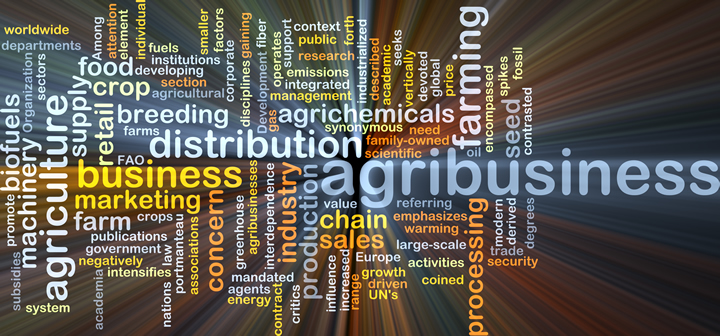7 Tech Advances Transforming the Bulk Storage of Fertilizer

Modern agriculture requires heightened efficiency in storage and production. Demand for food and goods has risen, emphasizing the need for agricultural professionals to mitigate and eliminate waste. How can the industry optimize its bulk storage solutions for fertilizer?
Improving quality control while keeping costs down is critical. Technology has assisted the sector in recent years with numerous advances. What tech lets agricultural professionals effectively store their fertilizer in bulk? Here are a few advances the industry has benefited from.
1.Optimized Indoor Facilities
Industry professionals have improved their storage methods over time by using indoor facilities. This strategy protects fertilizer from harsh conditions, whether hot or cold. Regardless of temperature, humidity can also be a significant factor in tropical and subtropical climates. While indoor storage is preferable, optimized solutions have improved this practice over the years.
For example, many agricultural professionals have transitioned to warehouses as horizontal storage solutions, making their fertilizer easy to access. Removing fertilizer from open-air storage is critical because it can contaminate groundwater. Improper fertilizer management leads to pathogens and nitrates infiltrating water and harming plant and animal life in the surrounding area.
Early innovations led to indoor facilities made from wood or metal. Modern structures often contain steel frames or concrete to limit leaks and environmental contamination. Agricultural professionals seeking to reduce their ecological impact build with recycled materials, such as concrete, due to their effectiveness. A 2020 Journal of Cleaner Production study concludes that recycled concrete aggregates successfully produce suitable self-compacting concrete.
2.Outdoor Tanks
Extensive indoor facilities might not be an option for some agricultural producers, so they opt for outdoor tanks to store their fertilizer in bulk. One approach is selecting a stainless steel structure.
Stainless steel tanks are beneficial because of their durability. These storage mechanisms last a long time due to their corrosion resistance. Chromium protects against rust — a worrisome problem for farmers. They must wash their vehicles to prevent rust, so stainless steel tanks reduce their maintenance tasks.
While stainless steel tanks are a high-quality advancement, they may be out of reach for agricultural professionals with less capital. Steel rebar reached its 10-year high in 2021 due to supply chain disruptions and inflation. Instead of steel, those in the agriculture industry can opt for fiberglass tanks.
Fiberglass tanks are less expensive than steel despite being as practical and durable. This storage mechanism is an excellent alternative as a lower investment for bulk fertilizer storage. Fiberglass tanks are low maintenance and lightweight, reducing the financial strain and ensuring ease of transportation for agricultural professionals.
3.Spill Prevention and Mitigation
Controlling the indoor climate for fertilizer in storage is crucial, and agricultural companies must also have strategies for spill prevention and mitigation. Using containment systems is essential for preserving fertilizer quality in the long term. With proper containment protocol, agricultural professionals can avoid ruining large amounts of fertilizer, losing money and contaminating drainage systems.
Technological advances in containment have reduced the risk of spills and leaks. Modern producers can wield artificial intelligence (AI) through sensors to detect leakage. These devices track each section of fertilizer and alert the owner to dangerous conditions. Machines find issues quicker than humans, so this technology is crucial for agricultural professionals.
4.Inventory Management Systems
AI has revolutionized industries worldwide. Researchers expect AI to have a nearly $2 trillion market size by 2030, demonstrating its massive growth. Another way one can see agriculture’s use of AI is through inventory management systems.
This intelligent software has become integral to agricultural organizations because it tracks inventory without human assistance. These systems alert the operator if there is an overstock of fertilizer that increases the risk of spills. Going digital with inventory management for fertilizer means farmers can reduce their on-hand supply and free room for other necessary items.
Another benefit of inventory management for fertilizer is the way it increases productivity and streamlines administrative work. Agricultural producers can use this software to improve their financial outlook by making their budgets more visible. They can track prices, trends and other necessary statistics affecting their annual revenue. Therefore, making adjustments throughout the year becomes easier.
5.Monitoring Devices
While weather and climate are significant concerns for agricultural producers, they must also worry about pests and thieves infiltrating their fertilizer storage. Indoor facilities provide increased safety, but rodents and bugs can still penetrate the premises. Tiny cracks and crevices are all these creatures need to damage fertilizer and cause massive profit losses.
Technological advances have improved safety and quality control through monitoring devices. These gadgets use motion detection, video surveillance and other real-time monitoring technology to thwart pests. Advanced systems may use infrared sensors to track activity in the dark. Fertilizer owners with adequate resources may use drones to get enhanced views of their storage without dispatching someone to do it.
6.Fertilizer Cooling Technology
Fertilizer requires cooling at the end stages of production or the producer risks compromising it with lumps. Optimal fertilizer feels granular like sand, so companies have paid extra attention to cooling technology in recent decades. Moving-bed heat exchangers are one example of technological advancements helping agricultural professionals in storage.
This enables fertilizer producers to effectively remove heat from the product through vertical plates. The machine ensures it dries and remains uniform throughout, making storage more manageable. Dry and cool fertilizer is less vulnerable to caking or being ruined by moisture, making moving-bed heat technology a critical advancement for the agricultural industry.
7.Dust Suppression Devices
Keeping employees safe is paramount for agricultural companies, especially those who work with crops. For example, a 2021 study shows employees who use pesticides are more likely to develop cancer and other critical health problems.
Dust is one of the primary issues employees deal with in fertilizer storage. It becomes a significant issue when it negatively affects the respiratory system. People inhaling it may cough or experience shortness of breath in the short term. The long-term ramifications may lead to lung disease and other health problems.
Modern technology has mitigated this problem through dust collection systems. These machines are crucial because they significantly lower or eliminate the dust emitted from fertilizer storage. These systems feature hoods to ensure dust doesn’t harm employees when transferring fertilizer from one section to another.
Changing the Future of Agriculture Through Fertilizer Storage
Agriculture has significantly changed in the past few decades due to increased demand for products and sustainability. How can industry professionals achieve both? Wielding technology in every aspect of the sector is crucial for optimizing production while keeping employees safe.
These advances demonstrate how the industry has changed to improve the bulk storage of fertilizer, enhancing quality control and the safety of products and workers.
Comments (0)
This post does not have any comments. Be the first to leave a comment below.
Featured Product

